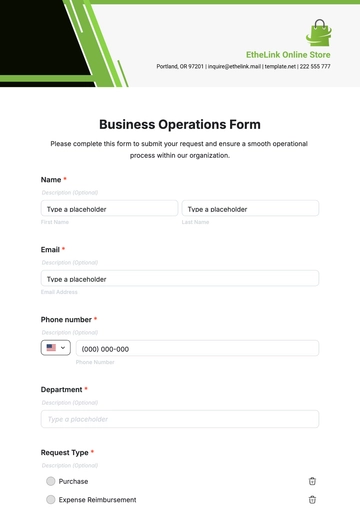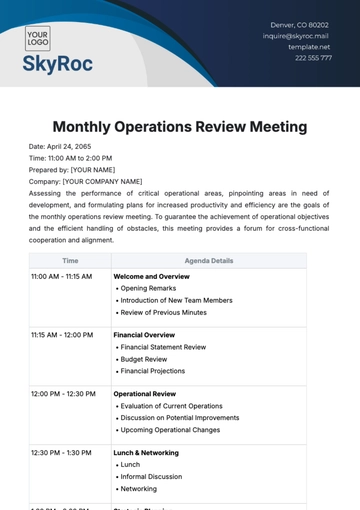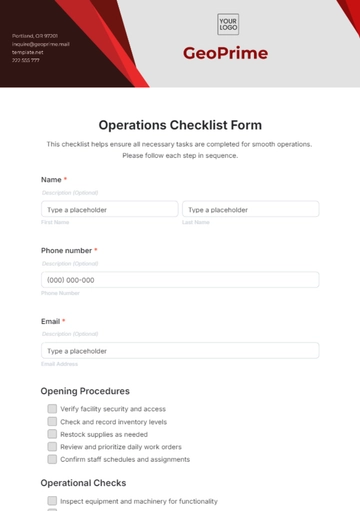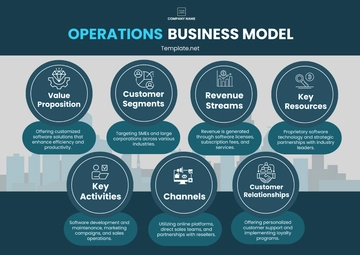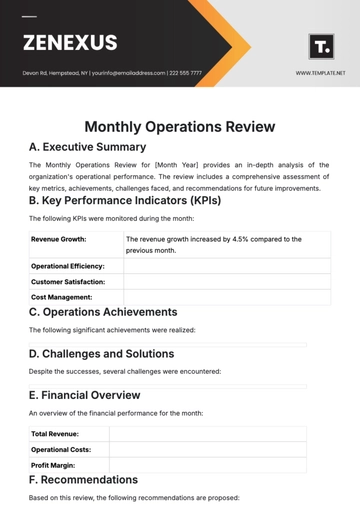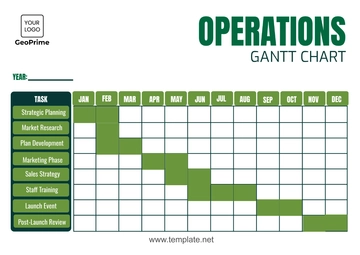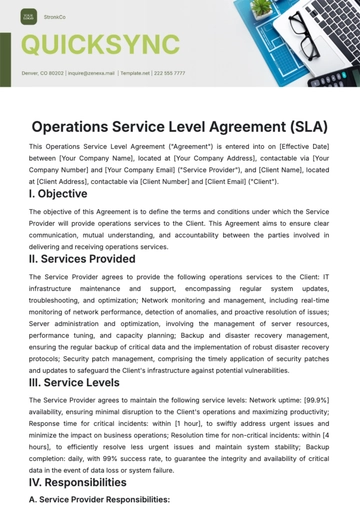Free Operations Service Recovery Protocol Document
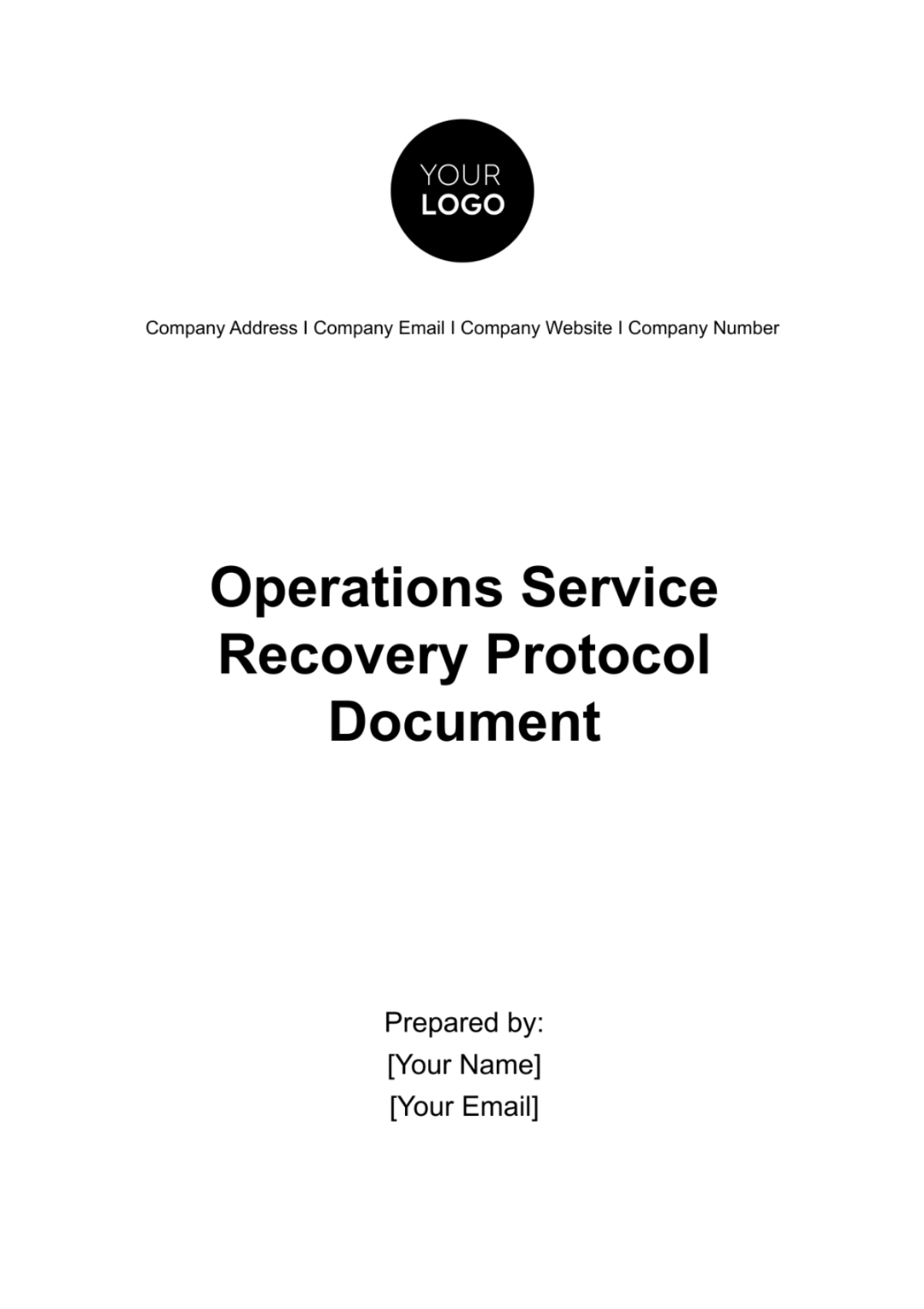
[Your Company Name] presents the Operations Service Recovery Protocol Document. This comprehensive guide is meticulously crafted to address operational disruptions and ensure rapid, efficient, and cohesive recovery efforts. Our aim is to fortify our operations department's resilience, uphold our commitment to excellence, and safeguard our esteemed reputation.
I. Objective
In this section, we delineate the core objectives of [Your Company Name]'s Operations Service Recovery Protocol. Our ambition is to promptly pinpoint, rigorously examine, and proficiently rectify any operational hindrances. We're dedicated to orchestrating the service recovery endeavors with unparalleled efficiency and precision, thereby instituting a uniformed methodology to operational disruptions. Furthermore, our goal is to reinforce the operational team's robustness and implement a detailed reporting mechanism for all recovery incidents, driving perpetual enhancement and fortification of our services.
1. To Swiftly Identify, Thoroughly Analyze, and Effectively Resolve Operational Disruptions.
At [Your Company Name], our first and foremost objective is to quickly identify operational disruptions. This involves a vigilant monitoring system that flags anomalies in real-time, followed by a thorough analysis to understand the disruption's nature and scope. Our adept team springs into action to devise and implement effective solutions, ensuring minimal downtime and disruption to our services. This rapid response capability is crucial for maintaining operational continuity and customer satisfaction.
2. To Manage and Execute Service Recovery Processes with the Utmost Efficiency and Effectiveness.
Efficient and effective management of service recovery processes is the linchpin of our operations strategy. We employ a structured approach to manage these processes, leveraging state-of-the-art technology and methodologies to ensure swift recovery. Our teams are trained to execute recovery plans with precision, ensuring that every action taken is aimed at restoring normal operations as quickly as possible, while also safeguarding the integrity and security of our operations.
3. To Standardize the Response to Operational Disruptions, Ensuring a Consistent and Structured Approach Across the Board.
Standardization of responses to operational disruptions is critical for ensuring consistency and reliability in our recovery efforts. [Your Company Name] has developed a comprehensive set of protocols and procedures that are rigorously followed during any service recovery scenario. This standardization not only helps in quick resolution but also in minimizing the risk of errors, ensuring that all team members are on the same page and that recovery efforts are coherent and coordinated.
4. To Bolster the Resilience of the Operations Department Against Future Service Interruptions.
Enhancing the resilience of our operations department is a key objective, aimed at minimizing the impact of future service interruptions. This involves not only strengthening our infrastructure and processes but also fostering a culture of continuous learning and adaptation among our team members. By analyzing past disruptions and recovery efforts, we identify areas for improvement and implement strategies that enhance our ability to withstand and recover from future disruptions, making our operations more robust and reliable.
5. To Establish a Clear, Comprehensive Reporting Structure for All Service Recovery Incidents, Facilitating Continuous Improvement.
A well-defined reporting structure for service recovery incidents is vital for [Your Company Name]. It allows us to capture detailed insights into each incident, including its cause, the response initiated, and the outcome of recovery efforts. This information is invaluable for conducting post-mortem analyses, identifying trends, and areas for improvement. By continuously refining our processes and protocols based on these insights, we ensure a dynamic and evolving approach to service recovery, always aiming for higher standards of operational excellence.
II. Scope
The Scope section of [Your Company Name]'s Operations Service Recovery Protocol is pivotal, setting clear boundaries and expectations for all involved personnel. It underscores the mandatory nature of this protocol for every team member, whether they operate on-site or remotely. This guideline meticulously addresses every phase of service disruption management—from initial detection through to resolution and insightful post-recovery analysis.
1. Applicability to All Team Members
This protocol is universally applicable to all members of the [Your Company Name] Operations Service department. Regardless of one's role or location, whether working from the office or remotely, adherence to these guidelines is non-negotiable. This inclusivity ensures that every team member is prepared and capable of contributing to service recovery efforts, fostering a cohesive and unified response to any operational disruptions that may arise.
2. Identification of Service Disruptions
A critical aspect of this protocol is the rapid and accurate identification of service disruptions. Our systems and processes are designed to detect anomalies as soon as they occur, enabling us to respond proactively. This early detection is crucial for minimizing impact and accelerating the recovery process, ensuring that we can maintain service continuity to the greatest extent possible.
3. Resolution Process
Upon identifying a service disruption, the protocol outlines a clear and detailed resolution process. This includes immediate steps to contain and mitigate the issue, followed by longer-term solutions to prevent recurrence. Our approach is systematic and data-driven, ensuring that every action taken is informed by the best available information and aimed at restoring normal operations as swiftly and securely as possible.
4. Post-Recovery Analysis
After resolving a service disruption, a thorough post-recovery analysis is conducted. This involves examining the incident in detail to understand its causes, the effectiveness of the response, and any lessons learned. This reflective process is essential for continuous improvement, allowing us to refine our protocols and enhance our resilience against future disruptions.
5. Exclusions and Reporting Requirements
While this protocol provides comprehensive coverage of service recovery within the Operations Service department, it recognizes that certain scenarios may fall outside our direct control. In such cases, while direct intervention may not be applicable, reporting and documentation remain crucial. This ensures that relevant information is captured and shared with appropriate parties, facilitating a coordinated response across the broader organization and compliance with regulatory requirements.
III. Definitions/Terminology
In this section, we establish the foundational language and concepts critical to understanding and implementing our comprehensive service recovery strategy. This clarity in terminology ensures that all team members, across various roles and responsibilities, share a common understanding of the key elements involved in managing and responding to operational disruptions. It is essential for facilitating effective communication, swift action, and a cohesive approach to service recovery and operational resilience.
Term | Definition |
|---|---|
Operational Failure | An interruption in standard operations resulting in service unavailability, significantly impacting service delivery and customer satisfaction. |
Service Recovery | A set of strategic actions initiated to rectify failures in customer service, aimed at restoring service levels and mitigating any negative impact on customers. |
Resilience | The ability of the operations department to rapidly recover from service interruptions, ensuring minimal impact on service continuity and customer experience. |
Near Miss | An incident that had the potential to cause significant operational disruption but was successfully identified and mitigated before any actual failure occurred. |
Incident Commander | The designated leader responsible for the overall management, decision-making, and coordination of the response to an operational disruption or service failure. |
Downtime | The period during which services are not operational or accessible to users, directly affecting service availability and customer access. |
Uptime | The duration in which services are available and functioning as expected, without any interruptions, ensuring seamless service delivery to customers. |
Root Cause Analysis | A methodical approach used to identify the fundamental reasons behind a failure, facilitating the development of effective solutions to prevent recurrence. |
Backup | The process of creating duplicates of critical data and systems to ensure their availability and integrity in the event of data loss or system failure. |
Redundancy | The incorporation of additional systems, components, or resources beyond the minimum required, to provide a fail-safe against operational failure. |
IV. Roles and Responsibilities
This part defines the specific duties and expectations for key positions within our organization. This structured outline ensures that every team member understands their role in the service recovery process, enabling a coordinated and efficient response to operational disruptions. By clearly delineating these roles, we facilitate seamless communication, swift action, and a unified approach to maintaining operational excellence and resilience.
Position | Responsibility |
|---|---|
Incident Commander | Leads the service recovery efforts with decisive action and coordination, acting as the central point of communication and decision-making throughout the incident resolution. |
Operations Manager | Manages daily operational activities to ensure ongoing service uptime, coordinating closely with the Incident Commander to address and mitigate disruptions. |
Resolution Team | Implements the service recovery actions according to the established plan, working efficiently to resolve the issue and restore service to normal operations. |
Data Analyst | Analyzes failure data and incident reports to identify underlying causes of disruptions, providing insights that guide preventive measures and strategic planning. |
Report Team | Compiles detailed documentation of each service recovery incident and the actions taken, creating a knowledge base that fosters organizational learning and improvement. |
Customer Support Lead | Communicates with affected customers, providing updates on service recovery efforts and ensuring transparent, empathetic engagement throughout the resolution process. |
IT Systems Engineer | Maintains and upgrades IT infrastructure and systems to support service recovery efforts, ensuring technology alignment with recovery objectives and operational needs. |
Quality Assurance Manager | Monitors the effectiveness of service recovery actions, assessing outcomes to ensure that recovery efforts meet quality standards and recommending improvements. |
Training Coordinator | Develops and delivers training programs for the service recovery process, ensuring all team members are equipped with the necessary skills and knowledge to respond to incidents. |
Compliance Officer | Ensures that service recovery actions and protocols comply with legal, regulatory, and company standards, minimizing risk and safeguarding organizational integrity. |
V. Procedure
Here is a systematic, step-by-step approach to managing and mitigating service disruptions. This process is meticulously designed to ensure rapid detection, effective coordination, and thorough resolution of any operational failures. By adhering to these procedures, our team guarantees not only the swift restoration of services but also the collection of insights that contribute to our ongoing improvement efforts. Below is an enhanced and comprehensive breakdown of the steps involved in our service recovery process.
Step | Action | Responsibility |
|---|---|---|
1 | Detect and immediately report any signs of service failure to the Operations Manager. | All Employees |
2 | The Operations Manager assesses the report and promptly informs the Incident Commander to activate the service recovery protocol. | Operations Manager |
3 | The Incident Commander mobilizes the Resolution Team and communicates the action plan, ensuring that recovery efforts begin without delay according to set guidelines. | Incident Commander |
4 | The Resolution Team assesses the situation, identifies the fastest route to service restoration, and implements the necessary recovery actions. | Resolution Team |
5 | Concurrently, the Data Analyst performs a deep dive into the failure data, aiming to pinpoint the root cause and any contributing factors. | Data Analyst |
6 | The IT Systems Engineer reviews and adjusts infrastructure as necessary to support the recovery process, ensuring technological capabilities are aligned with recovery needs. | IT Systems Engineer |
7 | The Customer Support Lead initiates communication with impacted customers, providing updates on recovery efforts and managing customer expectations throughout the process. | Customer Support Lead |
8 | Upon issue resolution, the Report Team compiles a comprehensive report detailing the incident, the actions taken to resolve it, and any findings from the root cause analysis. | Report Team |
9 | The Quality Assurance Manager reviews the incident report and recovery actions to ensure that all measures met the company's quality standards. | Quality Assurance Manager |
10 | A debrief meeting is held with the involved teams to discuss the incident, share insights, and identify improvements for future response efforts. | Incident Commander & All Involved Teams |
11 | The Training Coordinator updates training materials and programs based on learnings from the incident to better prepare team members for future disruptions. | Training Coordinator |
12 | The Compliance Officer ensures that all recovery actions complied with legal, regulatory, and company standards, addressing any compliance issues identified. | Compliance Officer |
VI. Requirements and Conditions
This comprehensive framework mandates rigorous training for all personnel, ensures the integrity of our backup systems, sets forth a robust reporting mechanism for disruptions, assembles a specialized team for service recovery, and institutes regular drills to maintain our readiness. By adhering to these conditions, we not only prepare our team for effective service recovery but also reinforce our commitment to operational excellence and resilience.
A. Mandatory Service Recovery Training for All Personnel
To equip every member of [Your Company Name] with the knowledge and skills necessary for effective service recovery, we implement a comprehensive training program. This mandatory initiative covers all aspects of our service recovery protocols, ensuring that personnel across departments are prepared to act swiftly and competently in the face of service disruptions. This training is regularly updated to reflect the latest best practices and lessons learned from past incidents, fostering a culture of continuous learning and improvement.
Component | Description | Frequency/Update Cycle |
|---|---|---|
Training Curriculum | A well-rounded curriculum covering service recovery protocols, customer communication, and problem-solving skills. | Annually, with updates as needed based on incident reviews and changes in protocols. |
Simulation Drills | Hands-on simulation drills that mimic real-world service disruptions, allowing personnel to practice their response in a controlled, learning-focused environment. | Bi-annually |
Feedback and Improvement | A system for collecting feedback from participants to continuously improve the training program based on real experiences and evolving service recovery needs. | After each training session |
Certification | A certification process to verify that all personnel have understood and can effectively apply the service recovery protocols in actual scenarios. | Upon completion of training modules |
B. Regular Updates and Maintenance of Backup Systems
The integrity of our operations heavily relies on the reliability and effectiveness of our backup systems. [Your Company Name] mandates regular updates and rigorous maintenance routines for all backup systems to ensure data integrity and availability. These protocols are designed to minimize the risk of data loss and ensure swift recovery capabilities in the event of a service disruption, safeguarding our operations and the interests of our clients and stakeholders.
Component | Description | Frequency/Update Cycle |
|---|---|---|
System Updates | Regularly scheduled updates to backup software and systems to ensure compatibility with current technologies and operational requirements. | Quarterly or as updates are released |
Maintenance Checks | Routine maintenance checks to verify the integrity and operability of backup systems, including data verification tests and recovery capability assessments. | Monthly |
Backup Testing | Testing backup restores to ensure that data can be effectively recovered in the event of a system failure or data loss scenario. | Quarterly |
Documentation and Review | Maintaining up-to-date documentation on backup procedures, configurations, and maintenance logs for audit purposes and continuous improvement. | After each maintenance or update cycle |
C. Robust Reporting Framework and Dedicated Recovery Team
A robust reporting framework for service disruptions is essential for identifying trends, understanding the impact of incidents, and guiding continuous improvement efforts. [Your Company Name] has established a comprehensive system for documenting and analyzing every service disruption, enabling us to respond more effectively to future incidents. Additionally, we have formed a dedicated team with specialized skills in managing and resolving service failures. This team is at the forefront of our recovery efforts, ensuring that we can quickly return to normal operations while minimizing the impact on our customers and business operations.
Component | Description | Implementation Details |
|---|---|---|
Reporting System | An integrated reporting system that allows for real-time incident logging, tracking, and analysis, facilitating swift identification of trends and impact assessment. | Cloud-based platform with 24/7 access for all relevant personnel. |
Dedicated Recovery Team | A specialized team equipped with the skills and resources to manage and resolve service failures, working in coordination with other departments to ensure comprehensive recovery efforts. | Team comprises members from IT, Customer Service, and Operations departments. |
Continuous Improvement Loop | A mechanism for utilizing insights gained from incident reports and recovery actions to refine service recovery protocols and training programs. | Bi-annual review meetings with all stakeholders to discuss findings and implement improvements. |
Stakeholder Communication | A structured communication plan to keep all internal and external stakeholders informed about service disruptions, recovery efforts, and post-incident analyses. | Standardized templates and protocols for communication during and after recovery efforts. |
Together, these requirements and conditions form the backbone of our approach to service recovery, ensuring that [Your Company Name] remains prepared, resilient, and responsive in the face of operational challenges.
VII. Training and Awareness
Through a structured and dynamic approach to training, we ensure that every team member, from new hires to seasoned professionals, is equipped with the knowledge and skills necessary for effective service recovery. Our program includes regular workshops, comprehensive onboarding, continuous protocol updates, and simulation drills, all designed to foster a proactive and prepared workforce ready to tackle any service disruptions with confidence and efficiency.
A. Frequent Service Recovery Workshops
[Your Company Name] organizes frequent workshops focused on service recovery techniques, best practices, and the latest trends in operational resilience. These interactive sessions encourage active participation and knowledge sharing among team members, fostering a culture of continuous learning and improvement. Experts in the field are often invited to provide fresh perspectives and insights, ensuring our team remains at the forefront of service recovery strategies.
Feature | Detail |
|---|---|
Objective | To keep the team updated on the latest service recovery techniques, best practices, and trends in operational resilience. |
Frequency | Quarterly workshops to ensure continuous learning. |
Content | A mix of internal and external expertise covering case studies, new tools, and technologies, with a strong emphasis on interactive learning and real-world application. |
Participants | Mandatory for all operational staff, with open invitations to staff from other departments to foster cross-functional understanding and collaboration. |
Outcome | Enhanced team capability in identifying, responding to, and resolving service disruptions efficiently, fostering a culture of continuous improvement. |
B. Comprehensive Onboarding Training for New Hires
We place a strong emphasis on equipping our new hires with a solid foundation in our service recovery protocols from day one. The comprehensive onboarding training covers all aspects of our operations, including the tools, technologies, and processes essential for effective service management and recovery. This initial training is critical for ensuring that new team members understand their roles in maintaining service standards and are prepared to contribute to our collective success.
Feature | Detail |
|---|---|
Objective | To provide new hires with a thorough understanding of the company’s service recovery protocols and their role in maintaining service standards. |
Duration | The first week of employment, with follow-up sessions at 30, 60, and 90 days to reinforce learning and address any questions. |
Content | Comprehensive coverage of the company’s operational processes, tools, technologies, and service recovery protocols, including hands-on practice and scenario-based learning. |
Participants | All new hires, regardless of department, to ensure a uniform understanding of service recovery principles and practices. |
Outcome | New team members are well-prepared and confident in their roles, contributing effectively to the company's service recovery efforts from the outset. |
C. Continuous Updates and Regular Simulation Drills
To keep pace with the evolving nature of our operations and potential service disruptions, [Your Company Name] regularly updates its service recovery protocols. These updates are communicated through dedicated sessions, ensuring that all team members are informed of any changes. Additionally, we conduct regularly scheduled simulation drills to recreate service recovery scenarios. These drills enhance team readiness, allowing team members to practice their roles in a controlled environment, refine their response strategies, and ensure that when real disruptions occur, our response is swift, coordinated, and effective.
Feature | Detail |
|---|---|
Objective | To keep all team members abreast of updates to service recovery protocols and to practice their roles in simulated service disruption scenarios. |
Frequency | Protocol updates are communicated semi-annually, with simulation drills conducted quarterly. |
Content | Updates session include changes in protocols, introduction of new tools, and lessons learned from recent service disruptions. Simulation drills replicate real-world scenarios to test and refine the team’s response strategies. |
Participants | Participation in updates sessions is mandatory for all operational personnel. Simulation drills involve selected teams or departments on a rotational basis to ensure broad and comprehensive training coverage. |
Outcome | Ensured readiness and adaptability to changes in operational procedures and potential service disruptions, leading to swift, coordinated, and effective service recovery actions. |
This multi-faceted approach to training and awareness not only prepares our team for the challenges of service recovery but also instills a sense of responsibility and teamwork. At [Your Company Name], we believe that a well-informed and well-prepared team is the key to maintaining operational integrity and delivering exceptional service to our clients, even in the face of unforeseen disruptions.
VIII. Enforcement and Consequences
This part of the protocol delineates the disciplinary actions that will be taken against non-compliance, reflecting our commitment to operational efficiency, customer satisfaction, and the maintenance of our brand reputation. It's clear: adherence to these protocols is not merely encouraged; it is imperative for the continued success and integrity of our operations. Through rigorous training and awareness efforts, we aim to minimize instances of non-compliance, ensuring that our team understands the importance of these protocols and the potential consequences of failure to adhere.
A. Disciplinary Measures
Non-compliance with our service recovery protocols will trigger a structured disciplinary process, tailored to the severity and frequency of the infraction. Measures range from formal warnings and mandatory retraining to suspension or even termination in cases of repeated or egregious violations. This structured approach ensures fairness while upholding the high standards expected of all team members.
Level of Infraction | Disciplinary Action | Process |
|---|---|---|
First Offense | Formal warning and a detailed review of the specific protocols violated. | Documented in the employee's personnel file with a clear explanation of the consequences of repeated offenses. |
Second Offense | Mandatory retraining on service recovery protocols and a written reprimand. | Includes a probationary period with close monitoring to ensure compliance. |
Repeated Violations | Suspension without pay or termination, based on the severity and impact of the non-compliance. | A formal review by the disciplinary committee, including interviews with the involved parties, to decide on the appropriate action. |
B. Legal Action and Termination
In severe cases, particularly where non-compliance results in significant operational disruption, financial loss, or damage to customer relationships, [Your Company Name] reserves the right to pursue legal action against the individuals involved. Termination of employment may be considered for those who consistently fail to comply with our protocols, underscoring the critical nature of these rules to our operation's overall health and success.
Situation | Action | Justification |
|---|---|---|
Significant Operational Disruption | Pursuit of legal action and/or consideration of termination. | To recover losses and deter future violations, underscoring the critical importance of adherence to protocols. |
Financial Loss or Damage to Customer Relationships | Legal proceedings against the individual(s) responsible, with the possibility of termination. | Protects the company's interests and maintains trust with stakeholders, emphasizing the accountability for actions that jeopardize the company's operations and reputation. |
C. Training and Preventive Measures
Recognizing that prevention is better than cure, [Your Company Name] invests heavily in training initiatives designed to ensure every team member fully understands our service recovery protocols and their importance. Regular updates, workshops, and drills are conducted to reinforce protocol awareness and compliance, aiming to prevent non-compliance through education and engagement rather than enforcement alone.
Initiative | Description | Frequency |
|---|---|---|
Onboarding Training | Comprehensive introduction to service recovery protocols for all new hires. | At the start of employment and during the initial probation period. |
Regular Workshops and Updates | Ongoing education sessions on the latest protocols and best practices in service recovery. | Semi-annually, with additional sessions following any major protocol updates. |
Simulation Drills | Practical exercises simulating service recovery scenarios to reinforce protocol knowledge and readiness. | Quarterly, ensuring all team members participate at least twice a year. |
This comprehensive approach to enforcement and consequences highlights our commitment to maintaining a high-performance culture where operational protocols are respected and followed. It reflects our dedication to excellence and the proactive measures we take to protect our operations, customers, and brand reputation.
- 100% Customizable, free editor
- Access 1 Million+ Templates, photo’s & graphics
- Download or share as a template
- Click and replace photos, graphics, text, backgrounds
- Resize, crop, AI write & more
- Access advanced editor
Optimize your service recovery strategy with Template.net's Operations Service Recovery Protocol Document Template. This editable, customizable document template is tailored to empower marketing professionals. It's seamlessly editable in our AI Editor tool, promising a swift, efficient approach to regaining customer trust after an operational hiccup. Upgrade your recovery plan, deliver superior solutions, and solidify your market position with our expertly crafted template.

